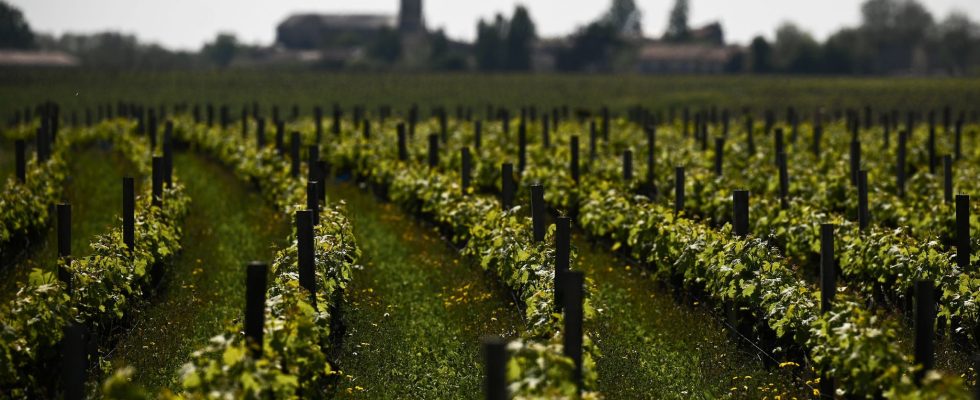Is it risky to live near vineyards? Wine farms are, in fact, those that use the most pesticides. However, the latter have been suspected for years of increasing the risk of certain pathologies, including cancers or neurodegenerative diseases. Numerous epidemiological studies also point to the health risk of domestic or professional exposure to phytosanitary products. However, data remains limited regarding the risks incurred by people living near agricultural plots treated with pesticides. A team of researchers from the CRESS laboratory, from Inserm and Paris Cité University, in collaboration with Public Health France, therefore attempted to improve knowledge on this subject.
These scientists decided to focus in particular on leukemia – a blood cancer – in children living near French wine plots. According to their work, the conclusions of which are published this Wednesday, October 18 in the journal Environmental health perspectives, the simple fact of having vines less than a kilometer from one’s place of residence does not increase the risk of developing this type of cancer. On the other hand, scientists have determined that the greater the density of vines around the place of residence, the greater the risk of developing leukemia. “According to the data we have collected, there is an increase in the risk of +4% to +8% of developing acute lymphoblastic leukemia for each time the density of vines within one kilometer increases by 10%” , indicated Stéphanie Goujon, Inserm research engineer at CRESS, co-author of the study, during a press conference.
The researcher was keen to point out that the absolute risk of developing lymphoblastic or myeloid leukemia remains low, since the incidence rate of these cancers is extremely limited, with 45 cases per million children (around 500 leukemias are diagnosed each year in children in France). “A 4% increase of 40 cases per million produces a limited effect,” she warns. The fact remains that this significant increase will not fail to relaunch the debate on the dangerousness of pesticides.
How was the study carried out?
To carry out this study, Inserm researchers relied on data from the National Childhood Cancer Registry over the period 2006-2013. They estimated the presence and surface area of viticulture around the residence address of 3,711 children under the age of 15 suffering from leukemia in mainland France over this period, in order to create a first group. They then made the same estimate for 40,196 non-sick children of the same age, selected during the same period, in order to create a second control group.
For the group of sick children, the researchers used their place of residence at the time of diagnosis. For witnesses, they used their address at the time of their selection as witnesses. The CRESS team finally transmitted this information to the company RetailSonar, which determined the corresponding coordinates (latitude and longitude) using the reference address base of the National Institute of Geographic and Forestry Information (IGN) supplemented by cadastral data and aerial photos. Finally, the presence and surface area of vines around these coordinates were evaluated using maps – specially constructed for this study by Public Health France – allowing agricultural crops to be identified.
What are the results ?
After analyzing the data, the researchers discovered that the presence of vines less than 1,000 meters from the residence address was not more common among children with leukemia (9.3%) than among children witnesses (10%). “The simple presence of vines less than a kilometer from the residence address is not in itself a risk factor for leukemia,” summarizes Stéphanie Goujon. On the other hand, she and her team observed an association between the risk of developing lymphoblastic leukemia and the extent of the surface covered by the vines within this 1,000 meter perimeter. And this risk increases moderately depending on the surface area covered by the vines. “Each time the share of soil covered by vines within this 1,000 meter perimeter increases by 10%, the risk of acute lymphoblastic leukemia increases by 4 to 8%, depending on the databases used,” indicates the researcher. . However, no increase in risk was found for myeloid leukemia.
These results support other studies carried out on the health risks of populations living near agricultural operations. Work carried out in particular in California (United States) has shown that people residing near treated fields see their risk of developing Parkinson’s increase. “In France, previous work has shown that residents of the most agricultural regions also have a higher risk,” adds Alexis Elbaz, researcher at Inserm, who did not participate in this study.
What are the limits of this work?
If pesticides seem to be the number one suspect in the increased risk of leukemia, this study does not demonstrate it with certainty. The scientists also specify that they have not studied any phytosanitary product as part of their research and are therefore not able to target one or more products in particular. “Today, scientists do not have usable databases allowing us to know which pesticide is used on each plot,” regrets Stéphanie Goujon. Researchers also deplore that the databases linked to French agricultural plots are not sufficiently precise.
Furthermore, they were unable to send personnel to the field to confirm the presence of vines indicated by the various databases used. “We are very confident about the vine indicators less than a kilometer away, the density indicators lack a little precision,” admitted the researcher. She and her team plan to continue their work, this time focusing on other agricultural operations, but also on other cancers, particularly tumors of the central nervous system.
